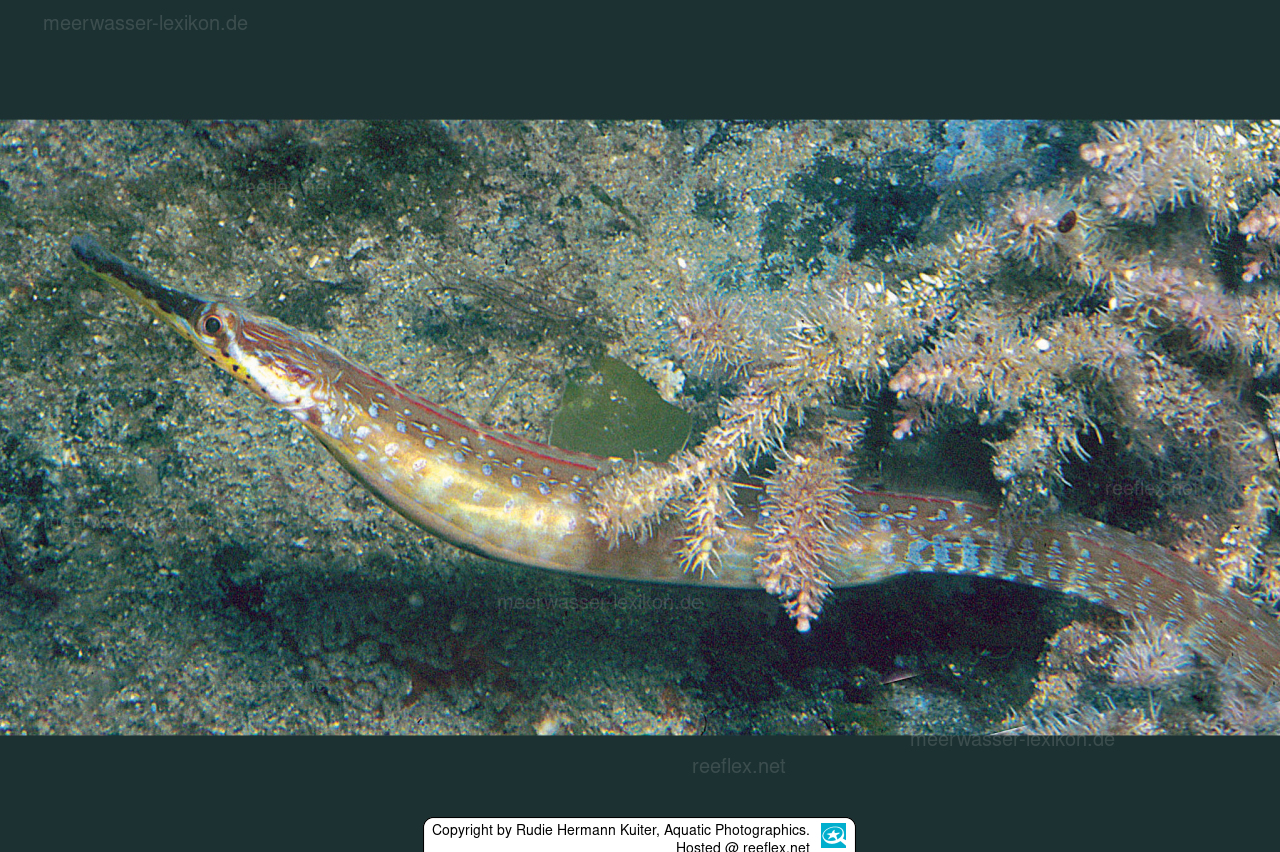Info
The longnose sea needle is light brown with 6 - 9 rows of small, dark-rimmed ocelli on the side of the trunk; faint diagonal light stripes or spots on the sides of the snout in adult males, distinct dark stripes and spots in adult females.
Vanacampus poecilolaemus inhabits shallow seagrass and macroalgae beds in estuaries and other calm, muddy, clear water areas.
Males incubate eggs in a closed pouch on the underside of the tail just behind the anal fin, approximately 40-50 eggs are laid in a single layer of 2 - 4 transverse rows in the pouch.
Early stage larvae exhibit body rings; anal fin reduced.
The longnose samphire differs from other Vanacampus species in its very long snout and large maximum size (28 cm SL versus 18.4 cm SL).
Synonymised names
Corythoichthys sauvagei Whitley, 1929 · unaccepted
Syngnathus modestus Sauvage, 1879 · unaccepted
Syngnathus poecilolaemus Peters, 1868 · unaccepted
Vanacampus poecilolaemus inhabits shallow seagrass and macroalgae beds in estuaries and other calm, muddy, clear water areas.
Males incubate eggs in a closed pouch on the underside of the tail just behind the anal fin, approximately 40-50 eggs are laid in a single layer of 2 - 4 transverse rows in the pouch.
Early stage larvae exhibit body rings; anal fin reduced.
The longnose samphire differs from other Vanacampus species in its very long snout and large maximum size (28 cm SL versus 18.4 cm SL).
Synonymised names
Corythoichthys sauvagei Whitley, 1929 · unaccepted
Syngnathus modestus Sauvage, 1879 · unaccepted
Syngnathus poecilolaemus Peters, 1868 · unaccepted







 Rudie Hermann Kuiter, Aquatic Photographics, Australien
Rudie Hermann Kuiter, Aquatic Photographics, Australien




